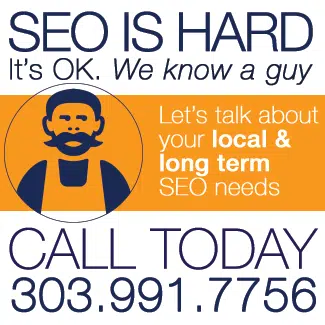Does video marketing really work for small businesses?
If you’re running a small business and haven’t started using video yet, you’re probably wondering if it’s worth the effort. Here’s the short answer: yes, absolutely. But don’t just take my word for it—the data tells a pretty convincing story.
Need help building a website that showcases your video content effectively? Contact The Affordable Web Guy for a free consultation about creating a professional site that converts visitors into customers.
According to Wyzowl’s 2025 Video Marketing Statistics, 93% of marketers say video marketing has given them a good return on investment. That’s the highest number they’ve recorded since they started tracking this data over a decade ago. Even better, 99% of video marketers say video has helped increase user understanding of their product or service.
For small businesses specifically, video isn’t some luxury that only big companies with huge budgets can afford anymore. It’s become one of the most accessible and effective ways to connect with customers, explain what you do, and actually get people to take action.
What kind of results can small businesses expect from video?
The numbers are hard to ignore. Shopify’s research shows that 82% of internet users worldwide watch videos online every month, and 78% of people prefer learning about a product or service by watching a short video rather than reading text.
When it comes to actual business results, video delivers:
- 96% of video marketers say it helps increase brand awareness
- 88% say video has helped them generate leads
- 82% report increased web traffic from using video
- Websites that include video have conversion rates around 4.8%, compared to just 2.9% for sites without video
What does this mean in practical terms? If you’re trying to get people to understand what you sell, trust your business, and actually buy from you, video gives you a better shot at all three than almost any other type of content.
Which types of videos should small businesses create?
You don’t need to produce Hollywood-quality content to see results. In fact, shorter and simpler often works better.
Most people prefer videos between 30 seconds and 2 minutes long, according to Wyzowl’s data. That’s not very long—you’re probably already explaining your product or service to customers in about that amount of time anyway.
Here are the types that work well for small businesses:
Product demos or how-to videos. Show people how your product works or how to solve a problem they have. These videos answer questions before customers even ask them, which builds trust and saves you time.
Customer testimonials. Real people talking about their experience with your business carries more weight than anything you could say about yourself. Even a simple smartphone recording of a happy customer can be powerful.
Behind-the-scenes content. People like doing business with people they feel they know. Showing your workspace, introducing your team, or explaining your process helps build that connection.
Quick social media clips. Short-form videos (think Instagram Reels, TikTok, or YouTube Shorts) get massive reach. HubSpot’s 2025 State of Marketing found that 21% of marketers say short-form videos deliver the highest ROI of any format.
Where should you share your videos?
Creating the video is only half the battle—you’ve got to put it where people will actually see it.
Your website should be priority number one. If you’re looking to improve your online presence, having a professional small business website that includes video can significantly boost both credibility and conversions.
Beyond your site, focus on:
YouTube. It’s the second-largest search engine after Google, and videos posted there can show up in regular Google searches too. Around 90% of video marketers use YouTube, making it the most popular platform.
Facebook and Instagram. These platforms prioritize video content in their algorithms, meaning your videos are more likely to be seen than text posts. Instagram Reels in particular are getting huge reach right now.
Your email list. Including video in emails can increase click-through rates significantly. Even just putting the word “video” in your subject line can boost open rates.
LinkedIn (if you’re B2B). Video performs exceptionally well on LinkedIn for reaching business decision-makers. In fact, 70% of video marketers now use LinkedIn for video marketing.
Do you need expensive equipment to make good videos?
Here’s the good news: probably not. While production quality does matter to some extent, authenticity matters more.
Research from Wyzowl shows that 91% of consumers say video quality impacts their trust in a brand, but that doesn’t mean you need a $10,000 camera setup. Video quality means clear audio, good lighting, and a steady shot—all of which you can achieve with a modern smartphone and some basic planning.
Many successful small business videos are shot on phones. The key is making sure:
- People can hear you clearly (invest in a $20 lapel mic if needed)
- The lighting is good (face a window or use inexpensive LED lights)
- The video is steady (use a tripod or prop your phone against something)
- You get to the point quickly
A genuine, slightly imperfect video of you explaining your service will almost always outperform a bland, overly-polished corporate video.
What’s the biggest mistake small businesses make with video?
Not starting.
According to the data, 37% of marketers who don’t use video say it’s because they simply don’t know where to start. Another 26% say they don’t have time. But here’s the thing—your competitors who are using video are capturing customers you’re missing.
Start small. You don’t need a content calendar with 50 video ideas. Start with one video answering your most frequently asked question. Film it on your phone. Post it to your website and social media. See what happens.
Other common mistakes include:
- Making videos too long (remember, 30 seconds to 2 minutes is the sweet spot)
- Talking about yourself instead of addressing customer needs
- Forgetting to include a clear next step (tell people what to do after watching)
- Not adding captions (most people watch videos with sound off on social media)
How does video fit into your overall marketing strategy?
Video shouldn’t exist in a vacuum—it works best when it’s part of your broader marketing efforts.
Think about your customer journey. Someone might discover your business through a short social media video, then visit your website to learn more. Having an affordable, well-designed website with embedded videos explaining your services can help convert that visitor into a customer.
Video also supports other marketing channels:
- Email marketing: Including video can boost click rates
- Social media: Video posts typically get more engagement than images
- SEO: Pages with video tend to rank higher and keep visitors on your site longer
- Paid ads: Video ads often have lower costs per click than static image ads
The beauty of video is that you can repurpose it across multiple channels. One product demo video can live on your website, get shared on social media, included in email newsletters, and even shown in your physical store if you have one.
What should you do next?
Stop overthinking it and make your first video this week.
Pick one question customers always ask you. Set up your phone. Hit record. Explain the answer in under two minutes. Post it somewhere. You’ve just started video marketing.
As you get comfortable, you can refine your approach, try different types of content, and improve your production quality. But the most important step is just beginning.
The businesses seeing results from video aren’t necesarily the ones with the biggest budgets or fanciest equipment. They’re the ones who recognized that their customers want to see video content—83% of consumers say they want more video from brands in 2025—and did something about it.
Your future customers are online right now, watching videos and making decisions about which businesses to trust. Make sure yours is one of them.

